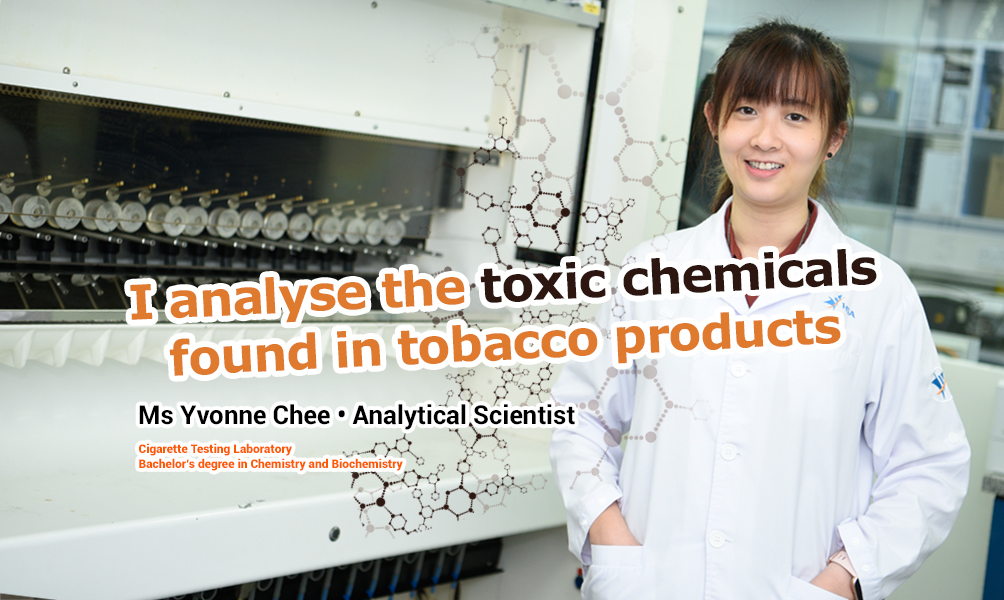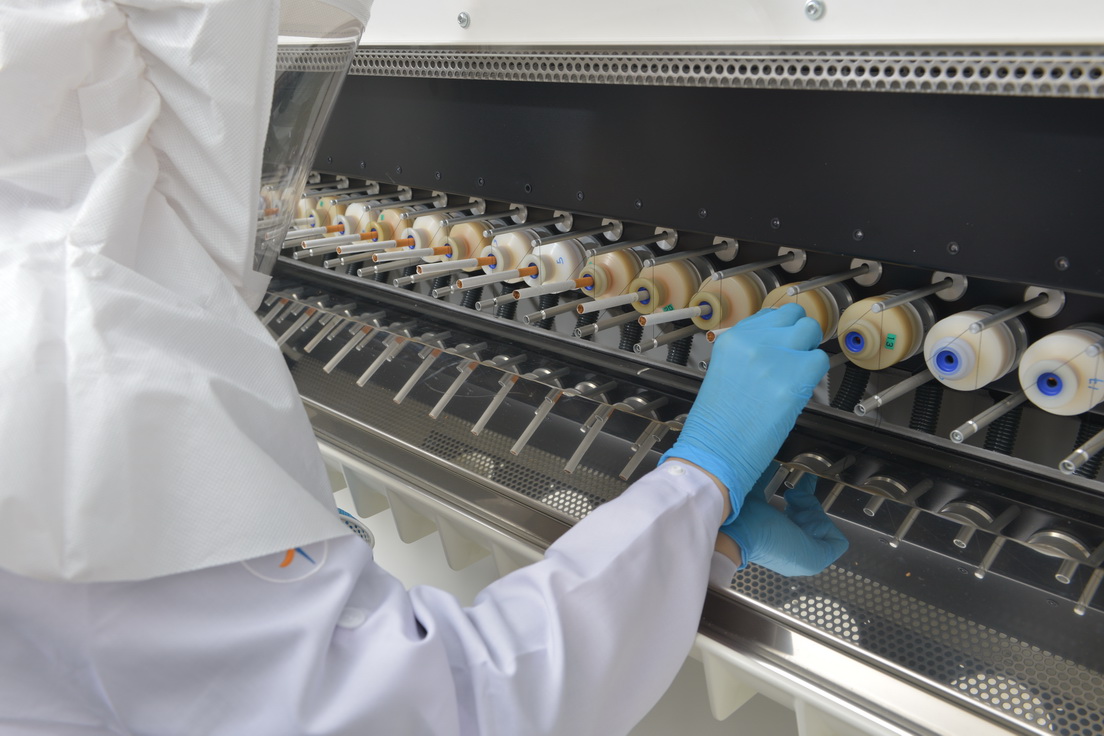I analyse the toxic chemicals found in tobacco products

Yvonne started her journey in HSA as a Laboratory Officer in the Pharmaceutical Laboratory and has since progressed to become an Analytical Scientist at the Cigarette Testing Laboratory (CTL) with more job responsibilities. In this article, we delve into her work at CTL, which includes developing and validating methods for the testing of contents and emissions of tobacco products.
Ms Yvonne Chee, Analytical Scientist
Cigarette Testing Laboratory
1. Can you tell us more about your work at the CTL?
CTL provides a range of services with the main bulk of work revolving around the provision of compliance testing to support regulatory enforcement needs carried out by the Tobacco Regulation Branch. Besides that, CTL also provides advisory and consultation to regulatory agencies both locally and overseas.
Basically, we work on tobacco products that are available in the market. Besides cigarettes, the range of testing also includes smokeless tobacco products such as heated tobacco products (HTPs), e-liquids and e-vaporisers, whereby the product is used by means other than smoking.
CTL has also been appointed as one of the WHO Collaborating Centres for Tobacco Testing and Research since year 2009. Collaborating with other WHO members which include academia, research agencies and other laboratories, CTL develops and validates methods and standard operating procedures (SOPs) for testing of contents and emissions of nicotine and other tobacco products.
2. You work with cigarettes and tobacco products. Are you concerned about how this may affect your health?
CTL has very stringent health and safety protocol to ensure staff are well-protected against cigarette smoke when they carry out the testing. Before the testing, staff are required to put on the appropriate personal protective equipment (PPE) – the Jupiter hood, which makes us look like astronauts or beekeepers! The hood is attached to a powered fan unit which supplies air to the officer so that they can work comfortably and safely for long periods of time. The fan unit is equipped with a filter which provides protection against gases, vapours, and particulates.
Apart from donning the PPE, the lab is also well equipped with the odour control scrubber system which helps to eliminate odorous and toxic gases. On top of that, the smoking room has double doors which prevents the smoke from escaping the room and affecting other staff who are working nearby.
Contrary to being worried about how the work might impact my health, the work here at CTL has broadened my knowledge on the various types of tobacco products. I am now more aware of the dangers of smoking.
3. What brings you satisfaction at work?
This job is meaningful as it helps to shed light on what harmful chemicals are released when tobacco and vaping products are used. This helps to raise awareness to the general public.
 Laboratory staff placing cigarettes in the smoking machine's cigarette holders.
Laboratory staff placing cigarettes in the smoking machine's cigarette holders.
This job is meaningful as it helps to shed light on what harmful chemicals are released when tobacco and vaping products are used. This helps to raise awareness to the general public.
,
4. How do you feel when you see people smoking? Is there any advice you would give to them?
When I see people smoking, the first thought that comes to mind would be “OMG they are inhaling thousands of chemicals with just one puff!”.
One advice that I would give is that it’s never too late to quit smoking. When one smokes, it not only affects the user but also those around them as there is no safe level of exposure to second or third-hand smoke. And for non-smokers out there, do not be curious as anyone who starts smoking is at risk of being addicted to nicotine.
5. There’s a big instrument at your laboratory – the smoking machine. What does it do?
The smoking machine at CTL is a linear port, semi-automated machine that can smoke up to 20 cigarettes at once. This smoking machine mimics the human smoking behaviour, where cigarette sticks are first placed on the holder) and the smoke is then captured for chemical analysis. Each of the smoke runs allows for the measurement of nicotine, tar, carbon monoxide and many other harmful chemicals emitted from the cigarette smoke.
6. What are some of the interesting research projects you’ve worked on?
We did a project where we analysed how much nicotine was delivered during vaping and the results was shared to raise public awareness on the harm of vaping on Talking Point.
Related Articles